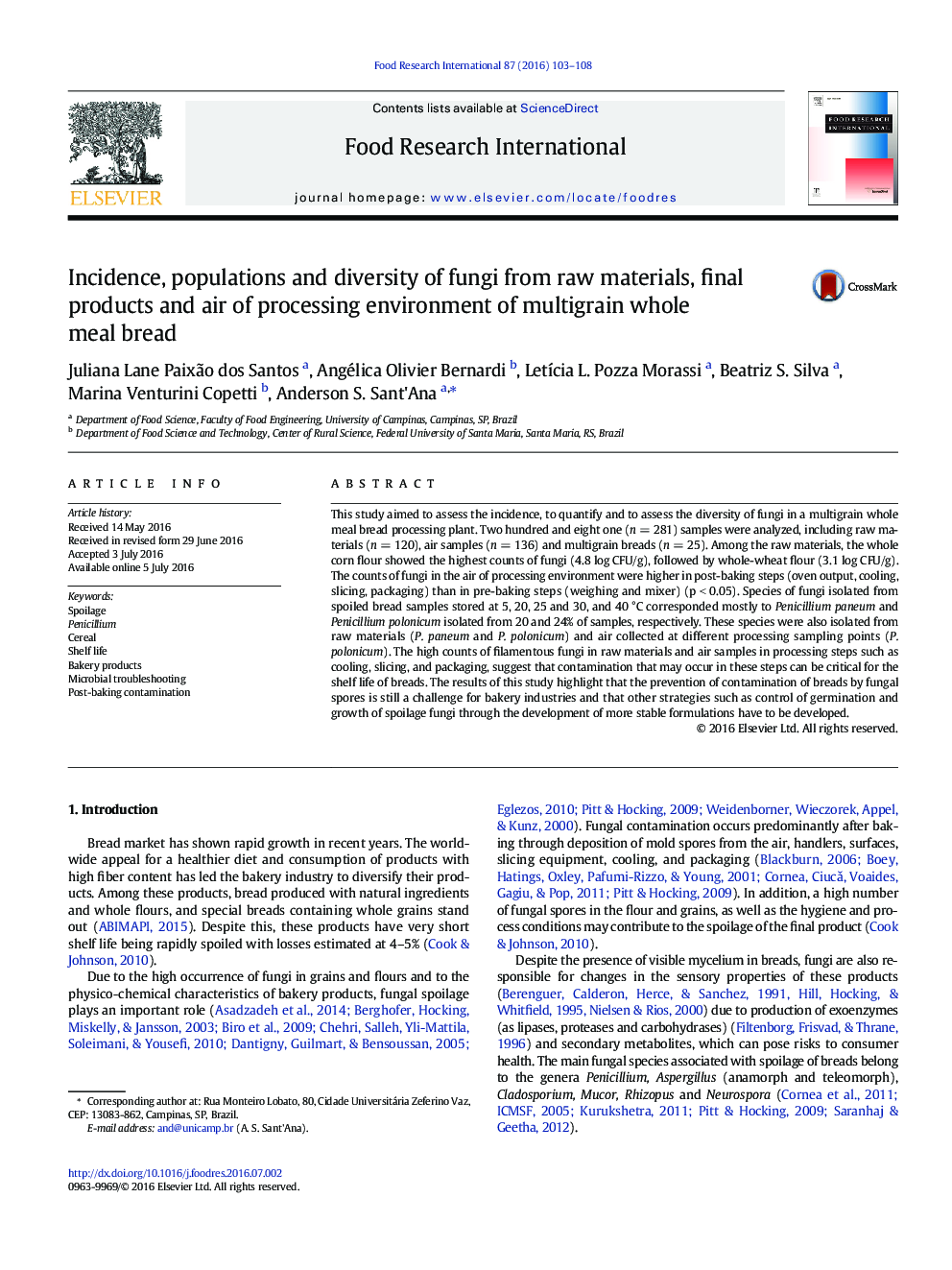| کد مقاله | کد نشریه | سال انتشار | مقاله انگلیسی | نسخه تمام متن |
|---|---|---|---|---|
| 4561205 | 1628461 | 2016 | 6 صفحه PDF | دانلود رایگان |
• Incidence and quantification of fungi in raw materials, air, and breads were assessed.
• The environmental contamination (air) by fungi was higher at the post-baking steps.
• Penicillium paneum (76.7%) and P. polonicum (12.6%) were isolated from spoiled bread.
• P. paneum and P. polonicum were not found in air samples of post-baking areas.
• The entire mechanism of contamination is not fully understood yet.
This study aimed to assess the incidence, to quantify and to assess the diversity of fungi in a multigrain whole meal bread processing plant. Two hundred and eight one (n = 281) samples were analyzed, including raw materials (n = 120), air samples (n = 136) and multigrain breads (n = 25). Among the raw materials, the whole corn flour showed the highest counts of fungi (4.8 log CFU/g), followed by whole-wheat flour (3.1 log CFU/g). The counts of fungi in the air of processing environment were higher in post-baking steps (oven output, cooling, slicing, packaging) than in pre-baking steps (weighing and mixer) (p < 0.05). Species of fungi isolated from spoiled bread samples stored at 5, 20, 25 and 30, and 40 °C corresponded mostly to Penicillium paneum and Penicillium polonicum isolated from 20 and 24% of samples, respectively. These species were also isolated from raw materials (P. paneum and P. polonicum) and air collected at different processing sampling points (P. polonicum). The high counts of filamentous fungi in raw materials and air samples in processing steps such as cooling, slicing, and packaging, suggest that contamination that may occur in these steps can be critical for the shelf life of breads. The results of this study highlight that the prevention of contamination of breads by fungal spores is still a challenge for bakery industries and that other strategies such as control of germination and growth of spoilage fungi through the development of more stable formulations have to be developed.
Figure optionsDownload as PowerPoint slide
Journal: Food Research International - Volume 87, September 2016, Pages 103–108
